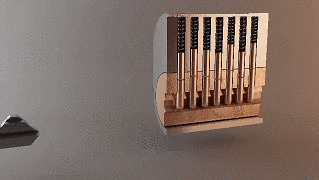Measuring tools are fundamental in any toolkit, ensuring accuracy in every project. Whether you’re constructing a building or crafting furniture, precise measurements are crucial. In this guide, we’ll explore the different types of measuring tools, their uses, and how they can be applied in various projects, including those involving geotextile materials.

What Are the Different Types of Measuring Tools?
There are several types of measuring tools, each designed for specific tasks:
- Tape Measure: A retractable, flexible ruler commonly used for measuring lengths, widths, and heights in construction and DIY projects.
- Caliper: A precision tool used to measure the distance between two opposite sides of an object, often in machining and metalworking.
- Level: Ensures surfaces are perfectly horizontal (level) or vertical (plumb), essential in construction and installation tasks.
- Square: A tool used to mark and check right angles, often in woodworking and framing.
Each type of measuring tool has its unique function, making it crucial to choose the right one for your project to ensure accuracy and safety.
How Do You Choose the Right Measuring Tool for Your Project?
When selecting a measuring tool, consider the following factors:
- Project Requirements: Identify the specific measurements needed for your task, such as length, angle, or depth, and choose a tool accordingly.
- Precision: Choose tools that offer the required level of precision, especially for tasks that demand high accuracy.
- Durability: Opt for measuring tools made from durable materials like stainless steel or high-quality plastic to ensure longevity.
- Ease of Use: Look for tools that are easy to read and use, with clear markings and comfortable grips.
Selecting the right measuring tool is essential for ensuring that your project is accurate and professional, especially when working with materials like geotextiles that require precise placement.
What Are the Safety Tips for Using Measuring Tools?
Using measuring tools safely involves understanding the tool’s mechanics and taking appropriate precautions:
- Wear Protective Gear: In tasks where measuring tools are used alongside cutting or drilling, wear safety glasses and gloves.
- Inspect Your Tools: Regularly check measuring tools for wear or damage that could affect their accuracy.
- Use the Correct Technique: Hold tools firmly and maintain a stable stance to ensure precise measurements.
- Work in a Well-Lit Area: Good lighting is essential to accurately read measurements and avoid mistakes.
These safety measures are particularly important when working on projects that involve geotextile materials, where accurate measurements are crucial to avoid waste and ensure proper installation.
How Are Measuring Tools Used in Projects Involving Geotextiles?
Measuring tools are critical in many projects that use geotextiles, particularly in ensuring accurate placement and installation:
- Measuring Dimensions: Tools like tape measures and calipers are used to determine the dimensions of the area where geotextiles will be installed.
- Ensuring Proper Alignment: Levels and squares help ensure that geotextiles are laid out accurately and evenly, preventing shifting or uneven coverage.
- Marking Cut Lines: Measuring tools are used to mark precise cut lines on geotextiles, ensuring they fit the intended area without wastage.
By using the right type of measuring tool and technique, you can ensure that geotextiles are installed effectively, maintaining their integrity and functionality.
Measuring tools are indispensable for any project, from simple DIY repairs to complex construction tasks. Choosing the right tool and using it correctly can make all the difference in your project’s accuracy and success. This is especially true when working with materials like geotextiles, where precise measurements are crucial for a durable and effective installation. Understanding the different types of measuring tools and their applications equips you to tackle any project with confidence and precision.